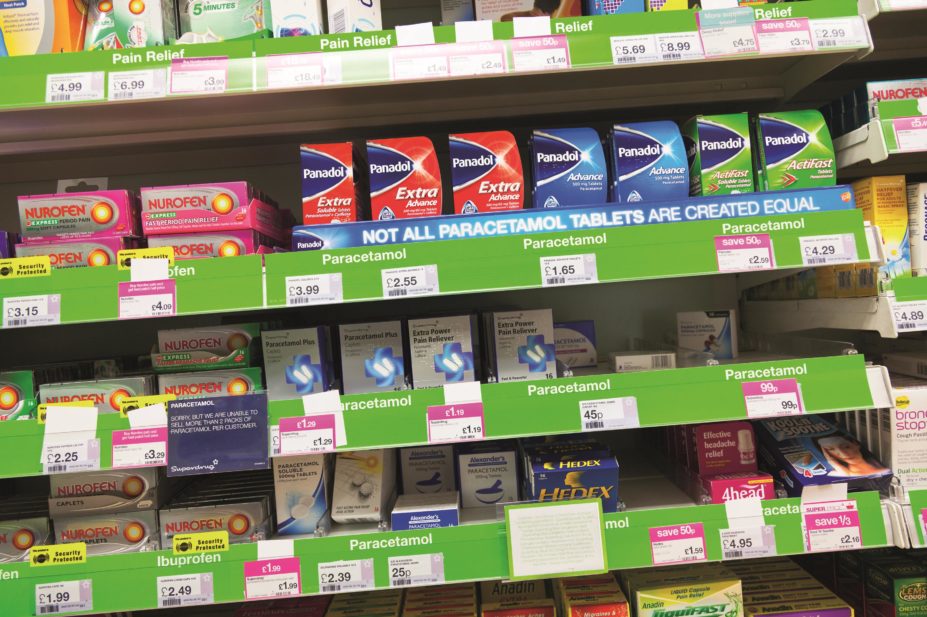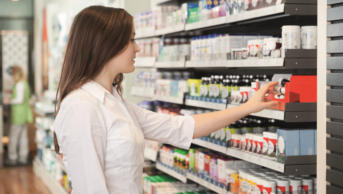
Tommy (Louth) / Alamy Stock Photo
A fifth of the UK population may have misused non-prescription medicines in some way during their lifetime, either by taking a higher dose than recommended, using a product more often than recommended or by using a medicine for longer than advised, according to research published in the Journal of Public Health[1]
(online, 3 February 2016).
In a survey of 434 adults aged between 19 and 92 years who were randomly selected from the UK electoral register, 4% admitted to using a non-prescription product for a non-medical purpose, which the researchers termed ‘abuse’.
“While non-prescription medicines are often perceived by the public as being safer than prescription medicines, they can cause harm,” say the researchers from the University of Aberdeen.
Eight respondents (2%) said they were dependent on the medicines, six of whom obtained their medicines from a pharmacy. Five of these respondents used multiple pharmacies and one used a single pharmacy. None relied on the internet for their supplies.
“Most dependent individuals were rarely or never questioned by pharmacy staff about their medicine needs or health condition when purchasing the non-prescription medicine,” say the researchers.
The researchers found that the lifetime prevalence of any type of self-reported, non-prescription medicine misuse was 19.3% (n = 76, 95% confidence interval [CI] 15.7%–23.5%). Some 11.9% of respondents (n=47, 95% CI 9.1%–15.5%) admitted using a higher dose than recommended, 10.6% (n=42, 95% CI 8.0%–14.1%) said they used the product more often than recommended and 10.6% (n=42, 95% CI 7.9%–14.0%) said they used the non-prescription medicine beyond the recommended time limit.
“Given the increasing emphasis on self care and empowering the public to manage their health with non-prescription medicines, the findings highlight the need for improved pharmacovigilance of these medicines to maximise benefits with minimal risk,” the researchers say. “Healthcare providers need to be aware of the potential for misuse, abuse and dependence, particularly in patients with long-term illness.”
The most common reason for ‘abusing’ a non-prescription medicine – a term the researchers used to describe the use of a product for a medicinal purpose but in an incorrect manner – was for sleep or relaxation purposes. Medicines used for these purposes were cold and flu products containing sedative antihistamines (n=3), cough remedies (n=2), codeine-containing analgesics (n=2), analgesics without codeine (n=1) or antihistamines (n=1).
Indicators that were predictive of misuse or abuse of non-prescription medicines were younger age, having a long-standing illness that required a non-prescription medicine and experience of illicit drugs.
Most respondents who used non-prescription medicines said they always read the patient information if the product was being used for the first time (214/343) and that they followed the instructions (243/349).
Niamh Fingleton, a researcher in the health services research unit at the University of Aberdeen, says there is a role for pharmacists to play in alerting customers to the dependency risks of some non-prescription medicines.
“When we spoke to people who were dependent on non-prescription medicines one of the things that came up was that when they go to the pharmacy there are leaflets about high blood pressure or diabetes but nothing about non-prescription medicines dependency and what they can do.
“The public assumes that non-prescription medicines have less risks than prescription medicines and many of them are safer, but as our research shows there are still risks and they should be careful.”
References
[1] Fingleton N A, Watson M C, Duncan E M et al. Non-prescription medicine misuse, abuse and dependence: a cross-sectional survey of the UK general population. Journal of Public Health. doi: 10.1093/pubmed/fdv204


